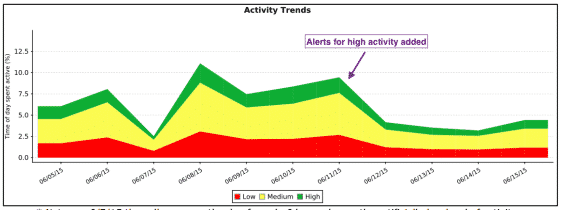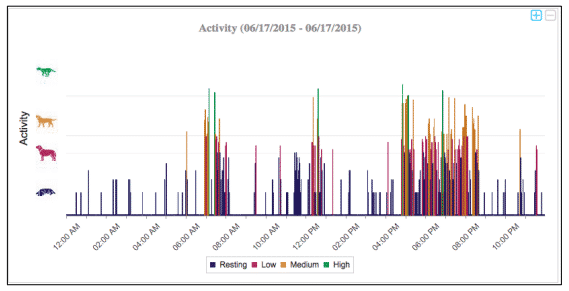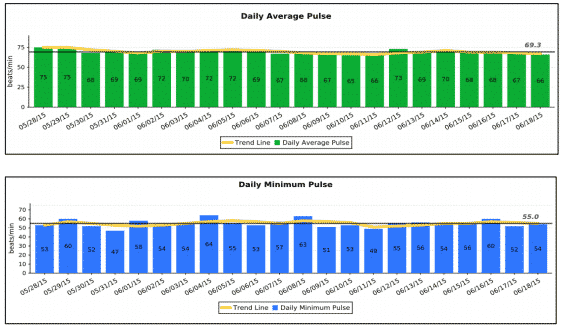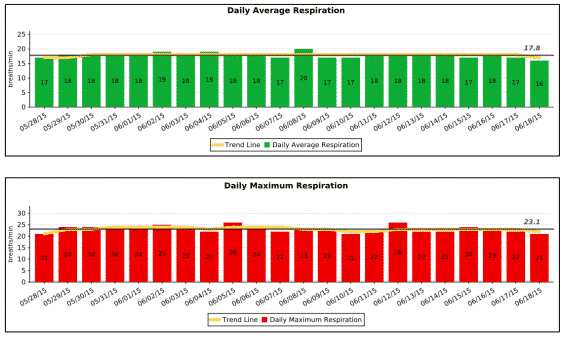Patient Condition and History
Jimmy, a 3-year-old neutered male American Pit Bull, was diagnosed with an infection of the heartworm parasite (Dirofilaria immitis).
Heartworm is a serious and potentially fatal condition. The parasite lives in the heart, lungs and surrounding blood vessels, and can cause severe lung disease, heart failure, and organ damage. According to the American Heartworm Society guidelines, treatment includes injections to kill the worms and additional medications that help improve the chances of treatment success and reduce the incidence of side effects.
Treatment protocols last weeks to months, depending on the patient’s condition. During this time it is essential that the dog’s activity is minimized. Cage rest and drastically restricted exercise during this period can decrease the chances of fatal complications from treatment.
Despite the importance of complete rest after treatment, it is generally very difficult to restrict the activity of a dog for weeks or months. Various client education tools are employed by veterinarians, but their true effectiveness is questionable.
Treatment and Description
Jimmy received treatment for his heartworm infection, including two Melarsomine injections 24 hours apart and additional medications, and was sent home for observation and forced rest.
A PetPace smart collar was applied to Jimmy to monitor adherence with the veterinarian’s instructions to restrict activity. The collar was also intended to detect the development of potential complications from the treatment.
The PetPace algorithm produces minute-by-minute activity data as well as periodic analysis, averages, and trends. Jimmy’s daily activity chart can be seen below. Each bar on the graph represents a 2-minute activity score – the higher the bar, the more intense the activity.
An alert for activity above a pre-determined threshold was added to the PetPace monitoring system to assist the dog’s owner in maintaining activity restriction. Jimmy’s veterinarian defined an approved level of movement. Any activity above that level generated an alert, which was sent to the owner. The veterinary staff also had continuous and unlimited access to the data and the alerts.
Following the receipt of PetPace alerts for high activity, and the owner’s conscientious handling of them, Jimmy’s average daily activity levels clearly declined. Before activation of the alerts feature, Jimmy spent an average 7.4% of the day active.
After PetPace alerts activation, that number was down to 3.8% – a decrease of over 51%.

* NOTE: ON 6/7/15 THE COLLAR WAS ON THE DOG FOR ONLY 6 HOURS, HENCE THE ARTIFICIALLY LOW LEVEL OF ACTIVITY.
Additional physiological attributes measured by the collar, including pulse rate, respiratory rate, Heart Rate Variability (VVTI), and others, remained normal and stable throughout this time, correlating with the clinical assessment of good response to treatment.
Discussion
Heartworm infection is a common and serious dog illness in the US and other countries. Prevention and prophylaxis are strongly recommended by the veterinary community, yet an estimated 1 million dogs are affected by it in the US alone2. An essential part of the treatment protocol includes strict activity restriction for weeks or months. Improving pet owner compliance with enforced rest remains a challenge.
In Jimmy’s case, monitoring physiological and behavioral parameters, such as respiratory rate trends, indicated that he was stable and in good condition. However, his high level of activity remained a concern. After adding a PetPace alert that signaled the pet owner every time Jimmy exceeded a predefined level of activity, a significant decrease in activity was achieved.
The PetPace wearable device is intended to provide key clinical insights, meaningful owner engagement and improved compliance with medical instructions after discharge from the hospital, said Dr. Asaf Dagan, a specialist in canine and feline medicine and surgery, and PetPace’s Chief Veterinarian. Jimmy’s case demonstrates an effective use of a PetPace collar to help prevent a potentially fatal situation. This principle can be applied to other conditions in which activity restriction is recommended, he concluded.
Conclusions
Jimmy’s case is an excellent example of the potential value of the PetPace collar in monitoring patients for activity restriction. The alerting feature together with veterinary involvement and pet owner engagement may be a useful factor in improving compliance. This model can be extended to other situations in which activity restriction is required, including spinal injuries, post-orthopedic surgeries, heart disease, and more.
The level of information now available to veterinarians and the ability to interactively engage owners in their pets’ care, thanks to the PetPace collar, enables markedly better patient care and clinical outcome.
Until now, veterinarians had no effective way of knowing if the patient is truly resting at home as we instructed, noted Dr. Dick Hay, a Diplomate of the American Board of Veterinary Practitioners and Jimmy’s veterinarian. “The PetPace technology allows us, for the first time, to work together with the owners to achieve the common goal,” he continued.
“We’ve loved being able to monitor Jimmy’s activity levels using the Pet Pace collar! The alerts that were generated helped us modify our approach to keeping him calm and were a great tool to help us while he recovered. I especially appreciate being able to view the data online – even from my phone!”
says Matthew Sandness, Jimmy’s owner. “We have enjoyed using the PetPace system and would recommend it to friends who have a similar need to monitor their pets,” added Mr. Sandness.





